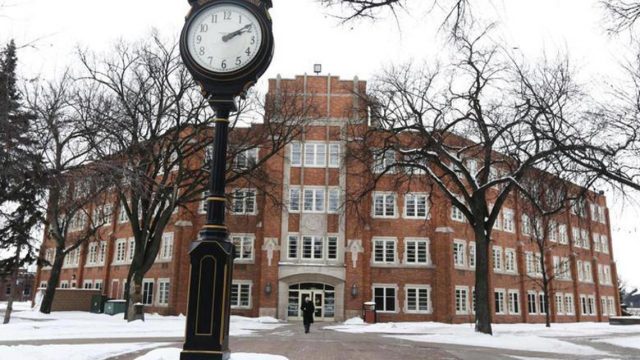University of North Dakota Professor Says Campus Is “Dying” Due to Legislature’s “Austerity”

Sheila Liming is an Assistant Professor in the English Department at the University of North Dakota. Per her university biography, she once earned a bagpiping scholarship and plays the accordion.
Which sounds, honestly, kind of awesome. Who knew there was a scholarship for bagpiping out there in the world? Also, accordions are fantastic.
Anyway, Liming authored an article recently for the Chronicle of Higher Education headlined, “My University Is Dying.” (See update below)
The subheadline: “How a ruthless demand for austerity bleeds public universities dry.”
UND is the oldest of North Dakota’s public institutions of higher education. It’s one of the university system’s two top-tier research institutions. It’s home to our state’s law school and medical school. Alumni from UND are all over our state’s government and the business community. Also, for what it’s worth, the hockey team is very popular with national stature.
If UND is dying, well, that’s big news for the people of North Dakota.
Is it?
Unfortunately, the article is behind a paywall, but I’d encourage you to read all of it if you can. I’ll post here a representative excerpt from Liming’s argument:
Starting in 2016, our state university system endured three successive rounds of annual budgets cuts, with average 10-percent reductions resulting in a loss of more than a third of the system’s overall funding. Additional cuts, even, were on the table this past year. And while our state legislators ultimately avoided taking yet one more stab at the dismembered body of higher education, there has been no discussion of restoring any of those funds.
She continues:
Our campus has struggled to recover, first, because austerity isn’t over for us, even if the blitzkrieg of cuts has stalled for the time being. The second reason is because there are fewer people around now to help see each other through the grueling work of recovery. We lost our top-ranked women’s hockey team, which nurtured many an Olympian over the years; we lost whole programs and departments, or else saw them so hollowed from the inside as to effectively be lost. We survivors lost friends, colleagues, and neighbors. No one from my college, which is the largest at UND, a flagship state school, went up for tenure last year, because there was no one left who was eligible to apply.
What Liming says about cuts in recent years is absolutely right, and it was hardly just the University of North Dakota which went through them. As you’ll see in the charts below, created by Legislative Council, the budget for the NDUS has been cut as has the general fund budget. These cuts were dramatic, but that was for a reason.
Austerity wasn’t the cause of this. Austerity was the needed cure for a spending boom which was built on the back of unsustainable revenues from an oil boom. Here’s the trend line for general fund spending over the last decade:
Note the build-up to the peak of the oil boom, and then the decline.
Now here’s the trend line for appropriations to the North Dakota University System:

General fund spending is nearly 50 percent higher, in fact, while the NDUS budget is about 11.5 percent higher (over an almost 5 percent decline in FTE enrollment, I might add).
“Austerity” is not a word I’d use for a situation where our universities, at least in the aggregate, have bigger budgets to educate fewer students.
The one area where Liming may have a point is in the decline of staffing at the universities. As you can see from this chart, which I built from data I obtained from the NDUS office, the number of instructional full-time-equivalent staff in the NDUS has decreased by 302 (a 10.6 percent decline) since 2016 while non-instructional staff has declined by 324 (5.11 percent):

Still, and again, those staff reductions are coming alongside a decline in enrollment. The number of FTE students enrolled in the NDUS declined nearly 4 percent during that same time frame.
Liming sees UND as dying, but I see a campus that’s adjusting to new normals. Both short-term, with budgets needing cutting after the oil boom spending binge, and long-term as college enrollment numbers drop across the country.
This isn’t austerity. This is reality.
By the way, the Grand Forks Herald editorial today talks about some of the things going on at UND, and it hardly paints a picture of a place that’s dying.
UPDATE: Liming, via Twitter, disputes that she’s claiming the university is dying despite the headline over her article reading, “My University is Dying.”
Actually I didn’t say that it was dying (authors don’t write the headlines, editors do). But I said a lot of other things – maybe read the article and find out what, exactly?
— Sheila Liming (@seeshespeak) September 26, 2019





